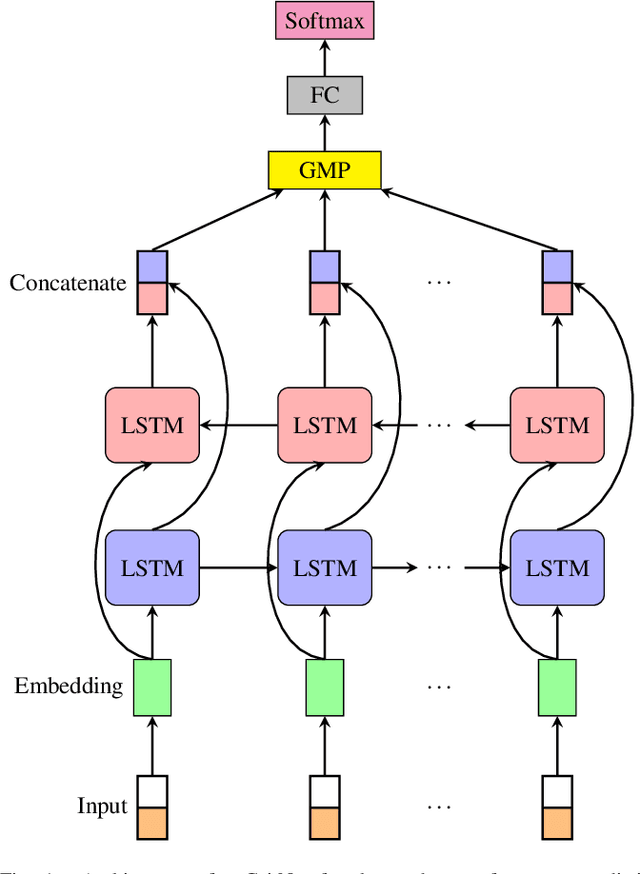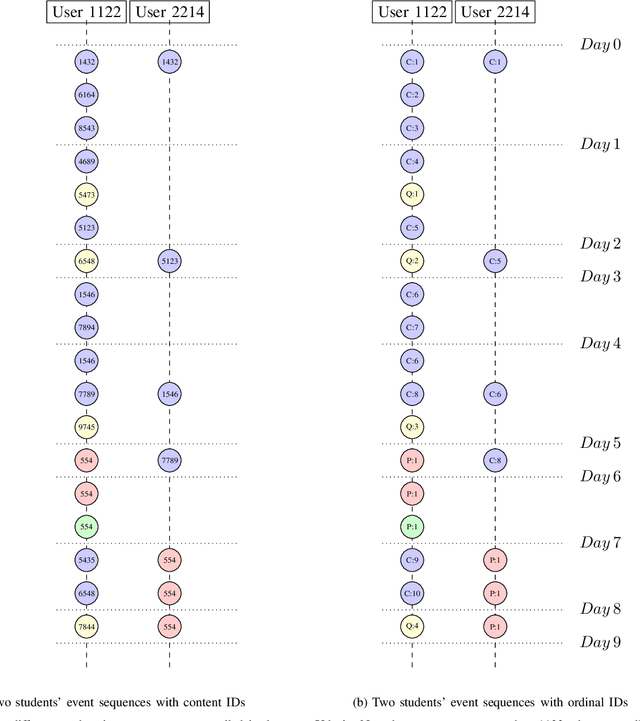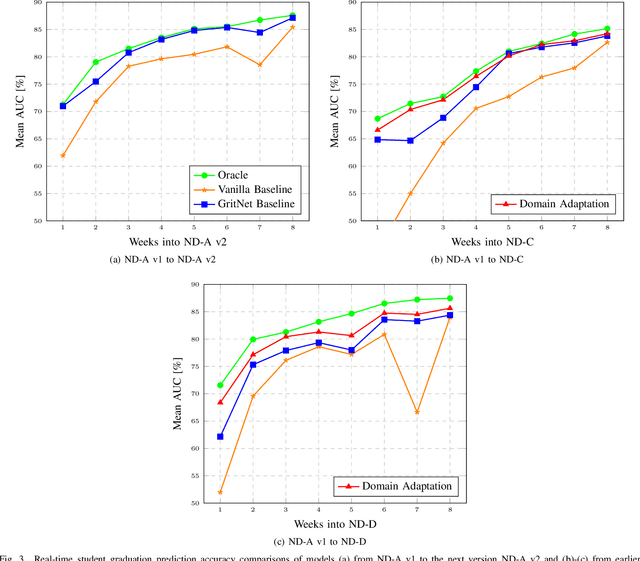Ethan Vizitei
GritNet 2: Real-Time Student Performance Prediction with Domain Adaptation
Sep 07, 2018



Abstract:Increasingly fast development and update cycle of online course contents, and diverse demographics of students in each online classroom, make student performance prediction in real-time (before the course finishes) an interesting topic for both industrial research and practical needs. In that, we tackle the problem of real-time student performance prediction with on-going courses in domain adaptation framework, which is a system trained on students' labeled outcome from one previous coursework but is meant to be deployed on another. In particular, we first review recently-developed GritNet architecture which is the current state of the art for student performance prediction problem, and introduce a new unsupervised domain adaptation method to transfer a GritNet trained on a past course to a new course without any (students' outcome) label. Our results for real Udacity students' graduation predictions show that the GritNet not only generalizes well from one course to another across different Nanodegree programs, but enhances real-time predictions explicitly in the first few weeks when accurate predictions are most challenging.
GritNet: Student Performance Prediction with Deep Learning
Apr 19, 2018


Abstract:Student performance prediction - where a machine forecasts the future performance of students as they interact with online coursework - is a challenging problem. Reliable early-stage predictions of a student's future performance could be critical to facilitate timely educational interventions during a course. However, very few prior studies have explored this problem from a deep learning perspective. In this paper, we recast the student performance prediction problem as a sequential event prediction problem and propose a new deep learning based algorithm, termed GritNet, which builds upon the bidirectional long short term memory (BLSTM). Our results, from real Udacity students' graduation predictions, show that the GritNet not only consistently outperforms the standard logistic-regression based method, but that improvements are substantially pronounced in the first few weeks when accurate predictions are most challenging.
 Add to Chrome
Add to Chrome Add to Firefox
Add to Firefox Add to Edge
Add to Edge